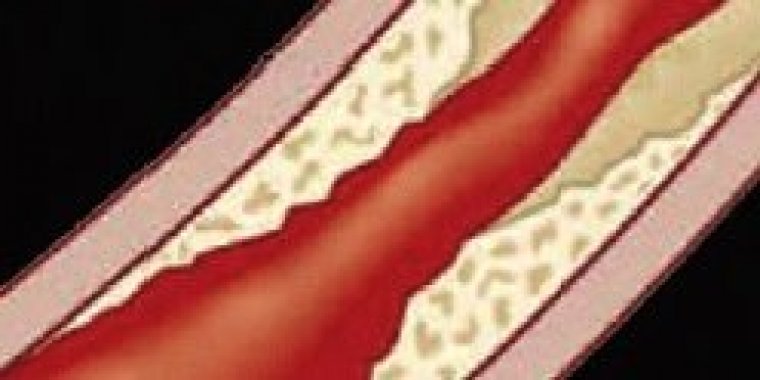| News / Science News |
Cause of hardening of the arteries – and potential treatment – identified
A team of UK scientists have identified the mechanism behind hardening of the arteries, and shown in animal studies that a generic medication normally used to treat acne could be an effective treatment for the condition.

Coronary calcification. Photo: NIH
The team, led by the University of Cambridge and King’s College London, found that a molecule once thought only to exist inside cells for the purpose of repairing DNA is also responsible for hardening of the arteries, which is associated with dementia, heart disease, high blood pressure and stroke.
There is no current treatment for hardening of the arteries, which is caused by build-up of bone-like calcium deposits, stiffening the arteries and restricting blood flow to organs and tissues.
The researchers found that poly(ADP ribose), or PAR, a molecule normally associated with DNA repair, also drives the bone-like calcification of arteries.
Additionally, using rats with chronic kidney disease, the researchers found that minocycline – a widely-prescribed antibiotic often used to treat acne – could treat hardening of the arteries by preventing the build-up of calcium in the circulatory system.
This hardening, or biomineralisation, is essential for the production of bone, but in arteries it underlies a lot of cardiovascular disease and other diseases associated with ageing like dementia. The researchers wanted to find out what triggers the formation of calcium phosphate crystals, and why it seems to be concentrated around the collagen and elastin which makes up much of the artery wall.
PAR – normally associated with the repair of DNA inside the cell – can in fact exist outside the cell and is the engine of bone production. This led the researchers to hypothesise that PAR may also play a role in biomineralisation.
In addition, PARP1 and PARP2, the dominant PAR-producing enzymes, are expressed in response to DNA damage and oxidative stress, processes which are associated with both bone and vascular calcification.
Using NMR spectroscopy, the researchers found that when the cells become stressed and die, they release PAR, which binds very strongly to calcium ions. Once released, the PAR starts mopping up calcium into larger droplets which stick onto the components in artery walls that give the artery its elasticity, where they form ordered crystals and solidify, hardening the arteries.
Having discovered the links between DNA damage, PAR, bone and artery calcification, the researchers then looked into a way of blocking this pathway through the use of a PARP inhibitor.
The researchers identified six known molecules that they thought might inhibit the PARP enzymes. Detailed experiments with these showed that the antibiotic minocycline was highly effective in preventing hardening of the arteries. (University of Cambridge)
YOU MAY ALSO LIKE




